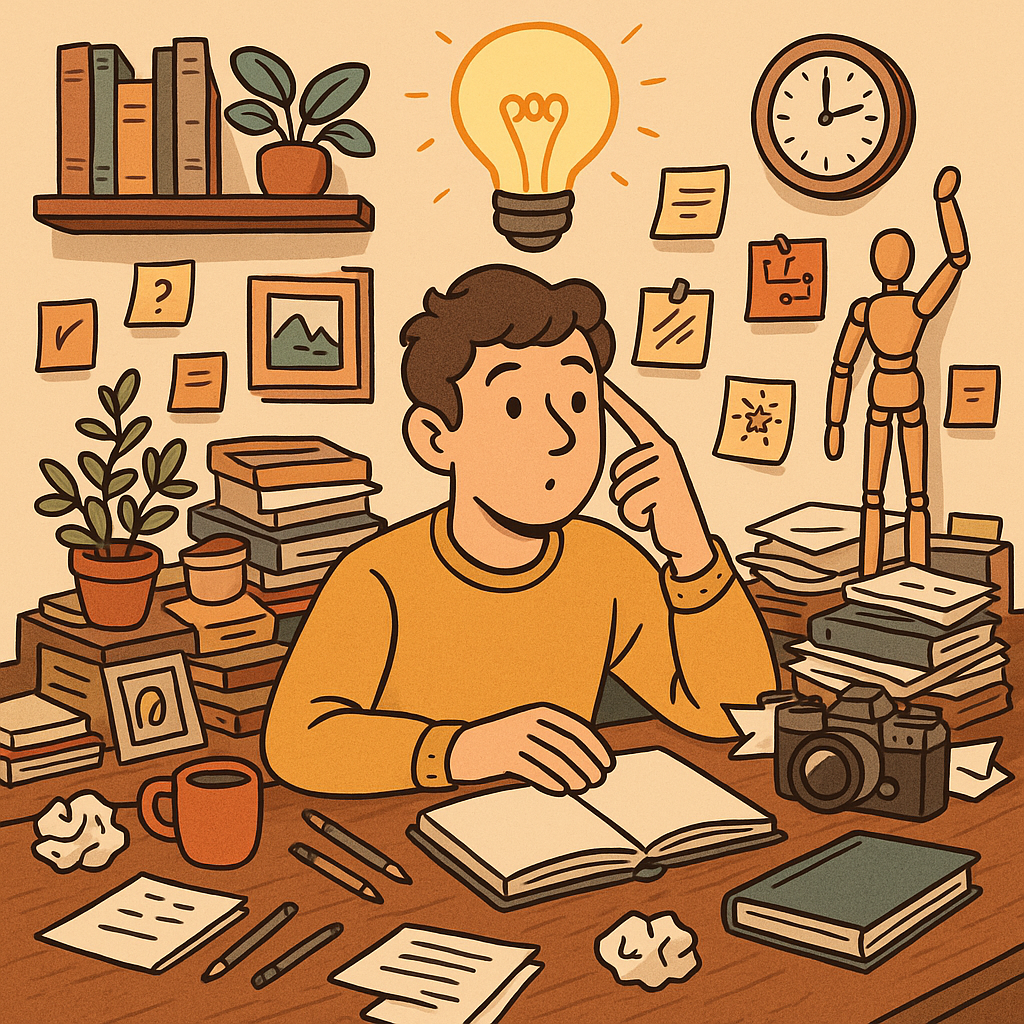In a world where thinking clearly can feel like a superpower, it’s easy to overlook one of the most effective (and natural) tools for sharpening your mind: movement.
Whether it’s a walk around the block, a yoga session, or dancing in your living room, movement isn’t just good for your body—it’s transformative for your brain. Science shows that physical activity enhances focus, improves memory, boosts mood, and helps untangle complex thoughts.
This article explores how to build thought clarity through movement, blending neuroscience, psychology, and practical techniques you can try today. Whether you’re a student, creative, entrepreneur, or just feeling mentally stuck, moving your body may be the breakthrough your mind is waiting for.

Why Movement Improves Mental Clarity
🧠 1. Exercise Fuels the Brain
Physical activity increases blood flow to the brain, delivering more oxygen and nutrients that help it function optimally. Regular aerobic exercise enhances the size of the hippocampus—the brain area involved in learning and memory.
“Exercise acts directly on the brain itself. It increases brain-derived neurotrophic factor (BDNF), a protein that helps grow new neurons and improves brain plasticity.”
— Dr. Scott McGinnis, Harvard Medical School
💡 2. Unlocks Creativity
Stuck on a problem? Go for a walk. Studies show that walking significantly boosts creative thinking. In fact, a famous Standfors Study found that walking increases creative output by an average of 60%.
Researchers found this effect held true whether participants walked indoors or outdoors, proving that it’s movement, not scenery, that matters most.
🧘 3. Mindful Movement Calms Mental Noise
Not all movement needs to be high-intensity. Practices like yoga, tai chi, or mindful walking help reduce mental clutter by activating the parasympathetic nervous system (your rest-and-digest mode).
According to the National Institutes of Health, movement-based mindfulness improves self-awareness and focus while reducing symptoms of anxiety and depression.
“The rhythm of physical movement can quiet the internal chatter of the mind.”
— Jon Kabat-Zinn, founder of MBSR (Mindfulness-Based Stress Reduction)
How to Build a Movement Practice That Sharpens Thinking
Here’s how to use movement strategically—not just for fitness, but for focus and clarity.
✅ 1. Start with Low-Barrier
You don’t need a gym membership. You just need to move with intention.
- 5–10 minute walks between work blocks
- Stretching while listening to a podcast
- Light chores with music on
- Walking phone calls
Pro Tip: Try “silent walks” to enhance inner dialogue and reflection.
🕒 2. Use Movement as a Thinking Tool
Before or during brainstorming sessions, try:
- Walk and Talk: Discuss ideas out loud with a partner or yourself while walking.
- Pacing & Problem-Solving: Move around your space while working through mental blocks.
- Movement Journaling: Take a walk, then journal your thoughts afterward. Notice any clarity gained.
🧍♂️ 3. Add Movement Breaks to Your Workday
To improve mental energy and reduce decision fatigue:
- Set a timer every 90 minutes to stand, stretch, or walk.
- Use apps like Stand Up! The Work Break Timer or Stretchly for reminders.
- Try desk yoga or movement snacks—short bursts of physical activity that energize without breaking your flow.
🎵 4. Incorporate Rhythmic Movement
Rhythmic activities like running, swimming, cycling, or dancing create a meditative state that supports deep thinking.
They promote “flow state”—a condition of focused attention where time fades and insight often emerges. This aligns with Mihaly Csikszentmihalyi’s flow theory, which links rhythmic movement with optimal mental performance.
🛌 5. Use Movement to Process Emotions
Clarity isn’t just cognitive—it’s emotional. Movement helps metabolize stress and anxiety, clearing emotional blocks that fog thinking.
- Shake out tension (literally)
- Try somatic practices like yoga, qi gong, or EMDR-inspired tapping
- Use dancing as emotional release and insight generation
Real-World Examples of Movement & Mental Clarity
🧑💼 Steve Jobs
Known for his “walking meetings,” Jobs believed that walking side-by-side sparked better collaboration and thinking than sitting in a room.
✍️ Virginia Woolf
Woolf frequently took long walks while crafting her novels, writing in A Room of One’s Own that “the mind runs faster when the feet move.”
🧠 Albert Einstein
Einstein was known to play violin when stuck on a theoretical problem. He believed that bodily movement helped unlock abstract thought.
Final Thoughts: Move Your Body, Clear Your Mind
You don’t need to run marathons or take fitness classes to unlock the benefits of movement. You simply need to move—and pay attention while doing it.
Whether you’re chasing a breakthrough idea or trying to quiet the noise of daily life, your body can help you get there.
Because sometimes, the best way to think clearly…
is to stop thinking, and start moving. 🏃♂️🧘♀️🚶♀️
References
- Stanford study finds walking improves creativity. Available at: https://news.stanford.edu/stories/2014/04/walking-vs-sitting-042414
- Meditation and Mindfulness: Effectiveness and Safety. Available at: NIH – “Meditation and Mindfulness: What You Need to Know”
- How to Clear Your Mind. Available at: https://www.masterclass.com/articles/how-to-clear-your-mind






